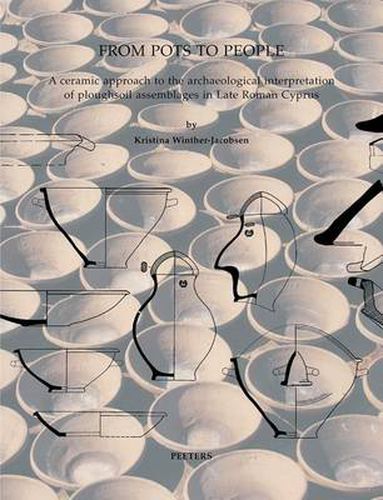Readings Newsletter
Become a Readings Member to make your shopping experience even easier.
Sign in or sign up for free!
You’re not far away from qualifying for FREE standard shipping within Australia
You’ve qualified for FREE standard shipping within Australia
The cart is loading…






During the last forty odd years, archaeological surveys have demonstrated that much can be said about changing patterns of regional exchange and settlement hierarchies based on surface observations. Walking the Mediterranean landscape, the most common indication of ancient human activity survey archaeologists come across are scatters of pottery and other ceramics. Enormous numbers of sherds are counted, collected, recorded, and interpreted in order to understand the ancient cultural, social, economic, and ritual landscapes. Some discrete scatters of ancient artefacts are interpreted as sites where people have lived and/or worked based on an analysis of both cultural and environmental data. These artefact scatters are modern phenomena affected by complex post-depositional processes such as cultivation which obscure potentional behavioural patterning. Artefact-based survey with its treatment of artefacts behaving as sediments in the soil enhanced with a detailed pottery analysis centred on use has the potential to greatly increase our understanding of the ancient rural world. This book offers an attempt to create a methodology for hypothesizing about the general activities taking place at sites identified by survey based on ceramics. The use typology is put forward as a tool for studying artefactual differentiation, and the method consists of establishing empirically generalized pottery indices of different human activities based on artefactual differentiation at Late Roman sites in Cyprus.
$9.00 standard shipping within Australia
FREE standard shipping within Australia for orders over $100.00
Express & International shipping calculated at checkout
Stock availability can be subject to change without notice. We recommend calling the shop or contacting our online team to check availability of low stock items. Please see our Shopping Online page for more details.
During the last forty odd years, archaeological surveys have demonstrated that much can be said about changing patterns of regional exchange and settlement hierarchies based on surface observations. Walking the Mediterranean landscape, the most common indication of ancient human activity survey archaeologists come across are scatters of pottery and other ceramics. Enormous numbers of sherds are counted, collected, recorded, and interpreted in order to understand the ancient cultural, social, economic, and ritual landscapes. Some discrete scatters of ancient artefacts are interpreted as sites where people have lived and/or worked based on an analysis of both cultural and environmental data. These artefact scatters are modern phenomena affected by complex post-depositional processes such as cultivation which obscure potentional behavioural patterning. Artefact-based survey with its treatment of artefacts behaving as sediments in the soil enhanced with a detailed pottery analysis centred on use has the potential to greatly increase our understanding of the ancient rural world. This book offers an attempt to create a methodology for hypothesizing about the general activities taking place at sites identified by survey based on ceramics. The use typology is put forward as a tool for studying artefactual differentiation, and the method consists of establishing empirically generalized pottery indices of different human activities based on artefactual differentiation at Late Roman sites in Cyprus.